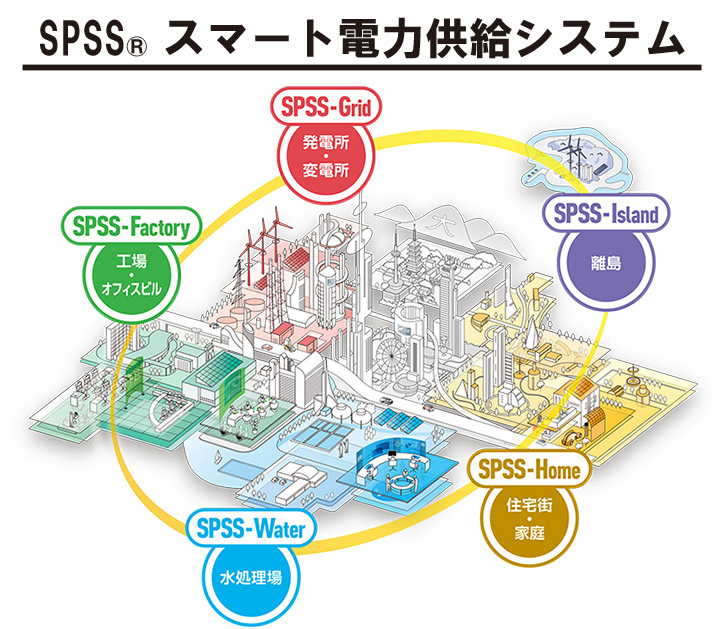Development of CO2 capturing technology targeting cement kiln exhaust gas
TAIHEIYO CEMENT CORPORATION
Outline
Cement production involves a high temperature (1,450°C) chemical reaction requiring an abundant heat source, mainly from the burning of the fossil energy. In this reaction process, the main raw material of limestone, or calcium carbonate (CaCO3), is heated and breaks down to calcium oxide (CaO) which then reacts with other raw materials to form cement clinker. The conversion of calcium carbonate to calcium oxide releases CO2, so large amounts of CO2 are generated through the overall manufacturing process.
Seeking to reduce the impact of cement production on the global environment, Taiheiyo Cement has commenced demonstration testing of new technologies being developed to reduce these CO2 emissions. Focusing on the chemical absorption method of CO2 recovery using amine-based absorbents with excellent CO2 absorption performance, in January 2019 the Company established a small-scale facility (20 kgs of CO2 per day) at the Fujiwara Plant (Inabe-shi, Mie, Japan) and has been conducting demonstrations of the technology using actual cement kiln exhaust gas in order to verify its applicability to cement manufacturing plants. The chemical absorption method already has a track record, having been installed in thermal power plants and municipal incinerators in Japan, but this is the first demonstration project in Japan targeting exhaust gas from cement kilns.
Description
Through this demonstration testing Taiheiyo Cement is developing the technology to capture CO2 from the cement manufacturing process by the chemical absorption method using amine-based absorbents. Application of this method to cement plants differs from that to thermal power plants or municipal incinerators in the following aspects:
1) The CO2 concentration of kiln exhaust gas is higher (at about 20%) than that of thermal power plants (at about 12%).
2) Amines, which are CO2 absorbents, are generally considered to demonstrate lower CO2 absorption performance under the influence of acidic constituents (SOx, NOx, HCl, etc.) contained in the exhaust gases. In the cement manufacturing process, the types and concentrations of these acidic constituents differ from those contained in exhaust gases from other sources.
3) The types and concentrations of other trace constituents contained in the exhaust gases.
The purpose of the testing is to evaluate the effects of these differences on the CO2 capture performance at the demonstration test facility and the performance of the overall system during long-term operation.
The demonstration testing has been conducted at the Fujiwara Plant using the final exhaust gas (bag filter exit gas) of No.5 Kiln. Factors considered in the selection of this kiln included:
• the exhaust gas from this kiln, which uses recycled fuels and raw materials at high ratios, was considered to be typical of Japanese cement kiln exhaust gas.
• the use of a bag filter to collect dust in the exhaust gas minimized any effect of dust on the CO2 capture test equipment.
Part of the kiln exhaust gas in the gas duct is directed to the CO2 capture test equipment. The operational data of the test equipment was collected, while gas and liquid samples were taken for analysis.
The findings obtained so far in the demonstration testing are as follows:
1) CO2 can be separated and recovered in high concentrations from exhaust gas using the chemical absorption method.
2) During one week of continuous operation, the demonstration facility operated stably and recovered 20 to 25 kg of CO2 per day.
3) The effects of the components contained in kiln exhaust gas on the performance of CO2 recovery under operational conditions are still under study in ongoing demonstration testing.
Looking forward, Taiheiyo Cement intends to face the challenges of a decarbonized society by continuing to work on demonstration testing of CO2 capture from kiln exhaust gas and to scale-up the demonstration facilities toward the practical application of CO2 capture in the future.
Supplementary information
This research has been conducted under “Sustainable CCS project” by Ministry of the Environment, Government of Japan.
Similar Innovation Challenges
Achieving net zero carbon emissions from paint finishing processes
Taikisha Ltd.
Activities for reducing GHG of business operations in Nissin Electric Group
Nissin Electric Co., Ltd.








-1人工光合成技術.jpg?id=2&tid=759&imageNumber=1)